Abstract
The epidemiology of inguinal hernia was investigated in a community survey in a neighbourhood of western Jerusalem in 1969-71. The current prevalence rate, excluding operated hernias, was 18 per 100 men aged 25 and over, and the lifetime prevalence, including operated hernias, was 24 per 100. Prevalence rose markedly with age; the lifetime prevalence rate reached 40 per 100 men at the ages of 65-74 and 47 per 100 at 75 and over. The prevalence of hernia was significantly higher in the presence of varicose veins, in men who reported symptoms of prostatic hypertrophy, and, among lean men only, in the presence of haemorrhoids. These associations may reflect the role of increased abdominal pressure. The prevalence of hernia was low in the presence of overweight or adiposity, suggesting that obesity is a protective factor. No significant age-independent associations were found with chronic cough, constipation, physical activity at work, or a number of other variables. Two-thirds of the hernias had not been operated upon. The prevalence of unrepaired hernias rose with age; 13% of all men aged 65-74 and 23% of those aged 75 and over had unoperated groin swellings. One in every five operated hernias showed evidence of recurrence. No significant age-independent associations were found between evidence of occurrence and other characteristics. A comparison of interview responses and examination findings showed that interview data on the presence of hernias were of low validity, mainly because of under-reporting.
Full text
PDF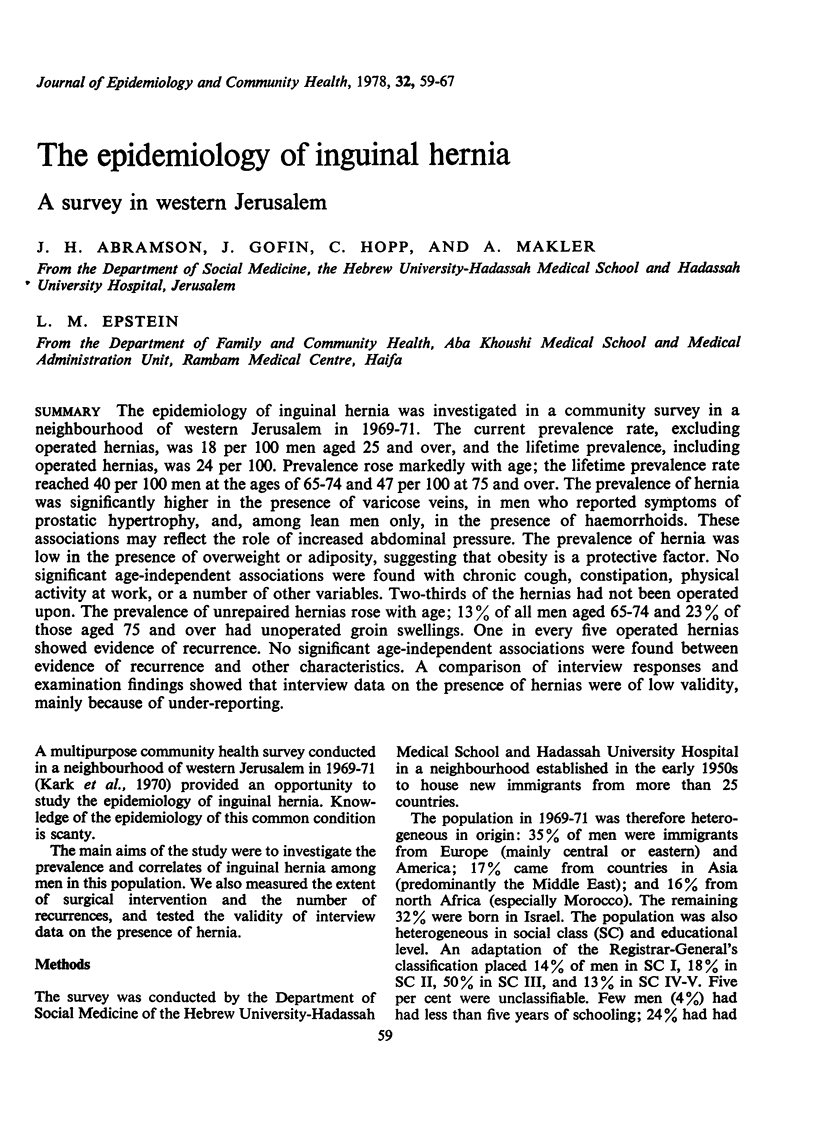
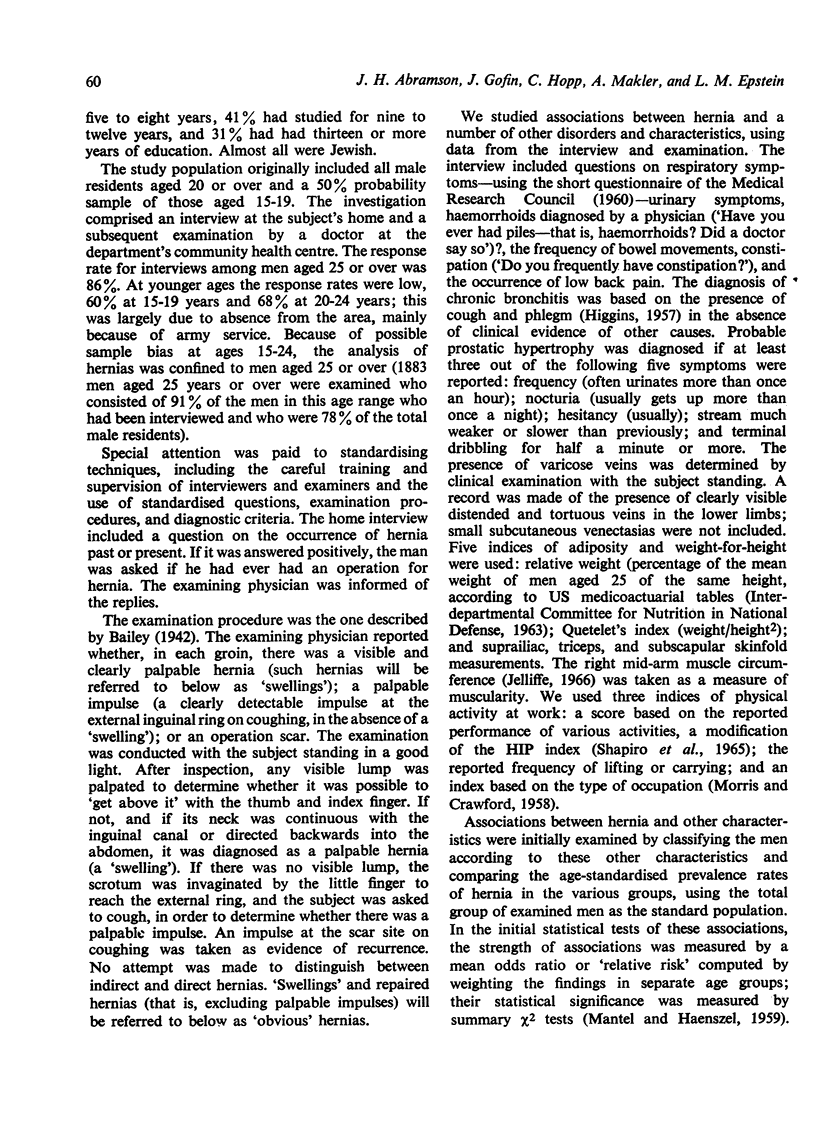
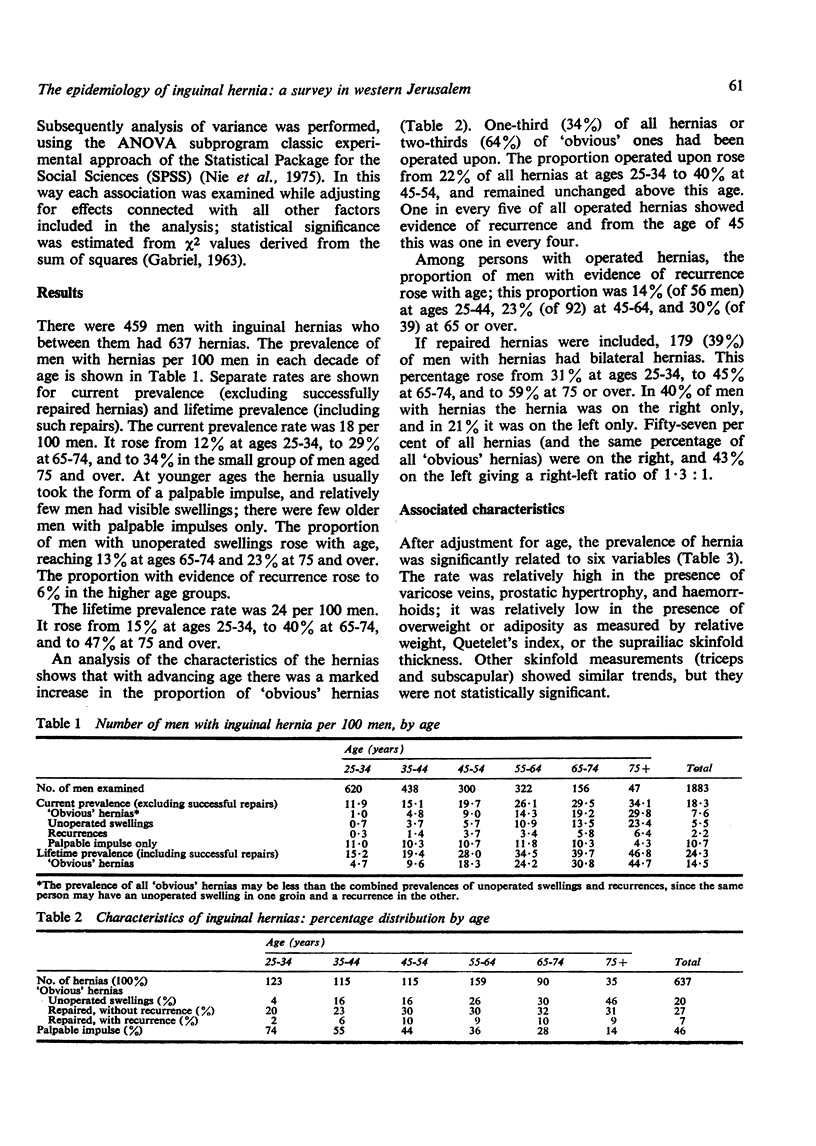

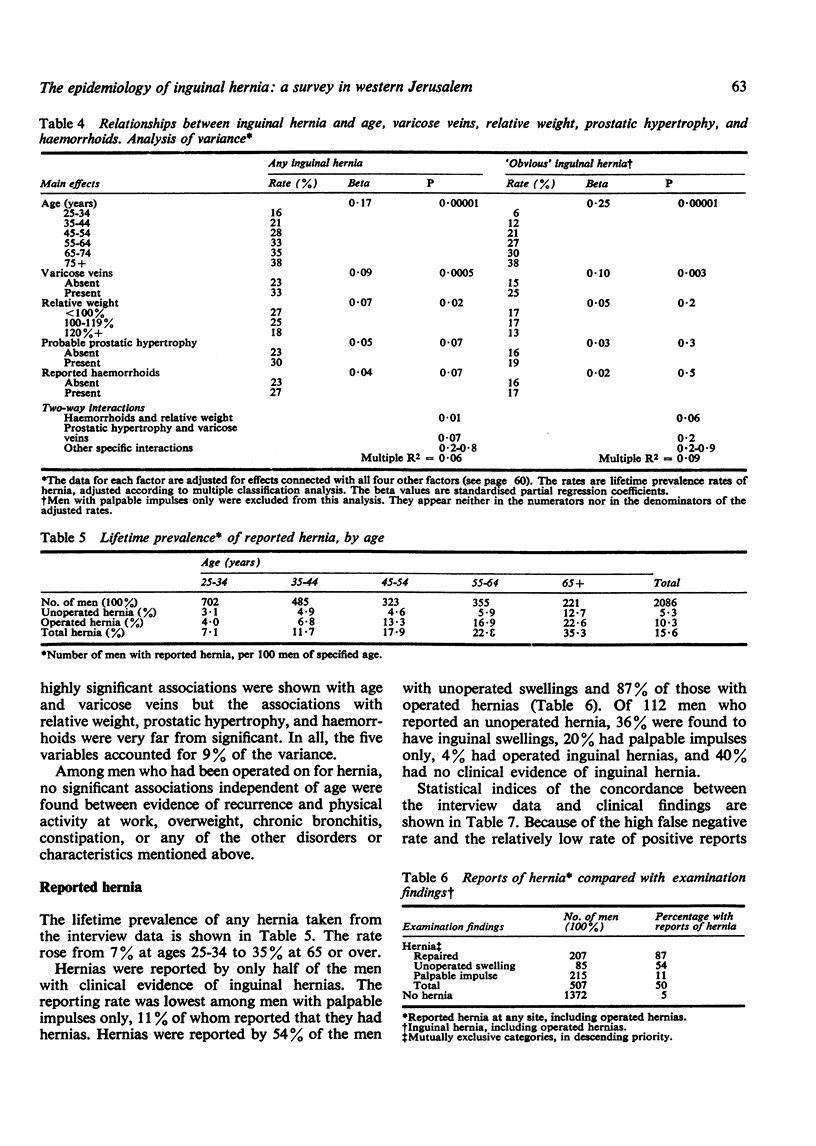
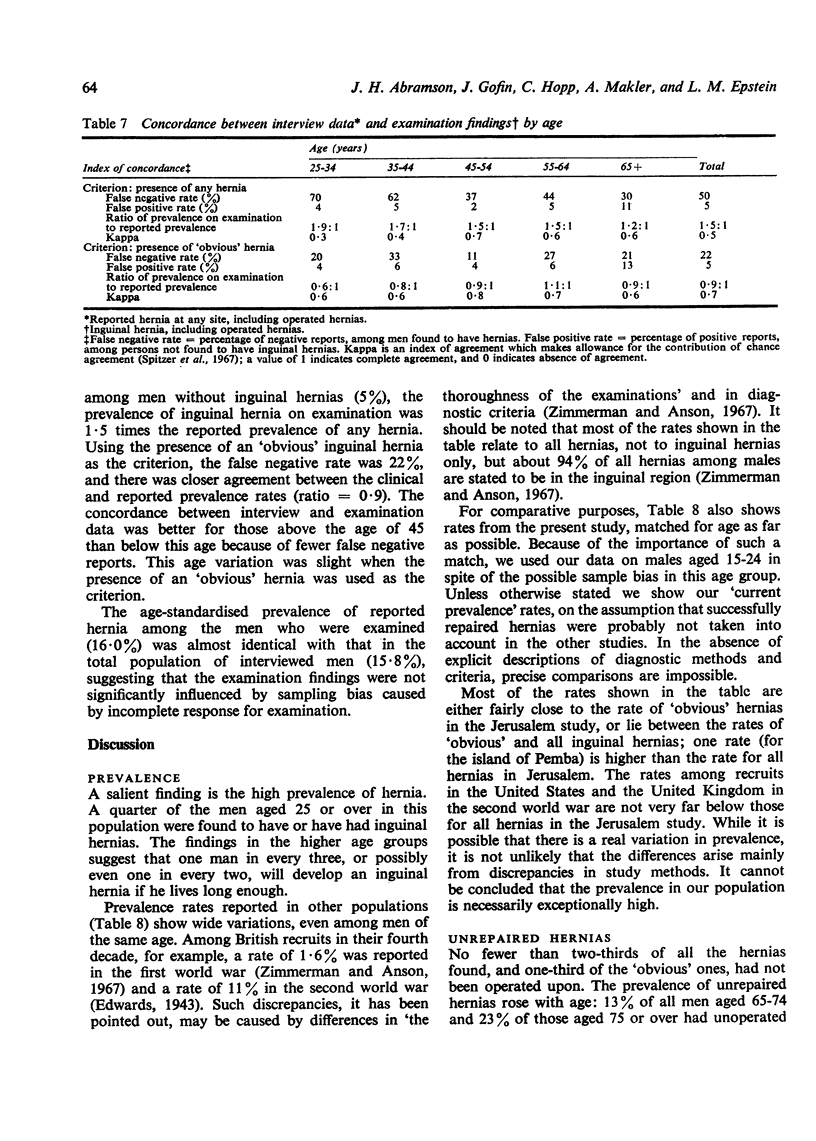

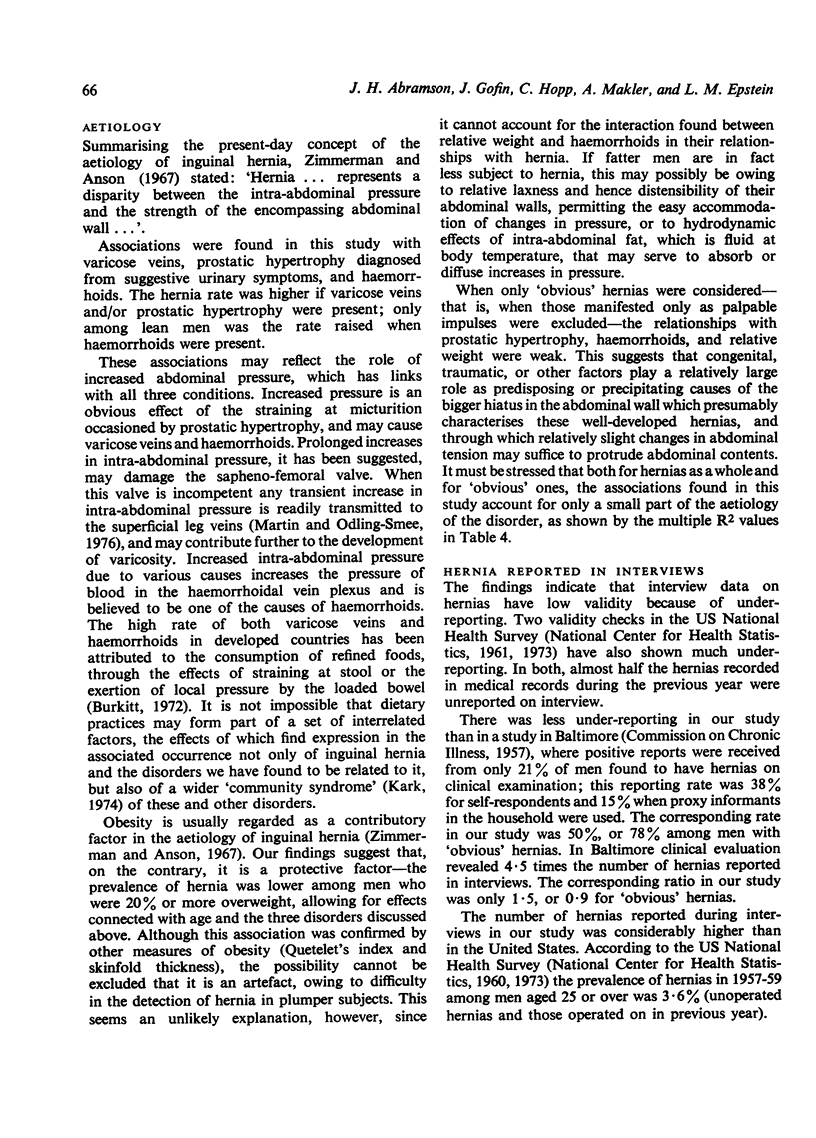
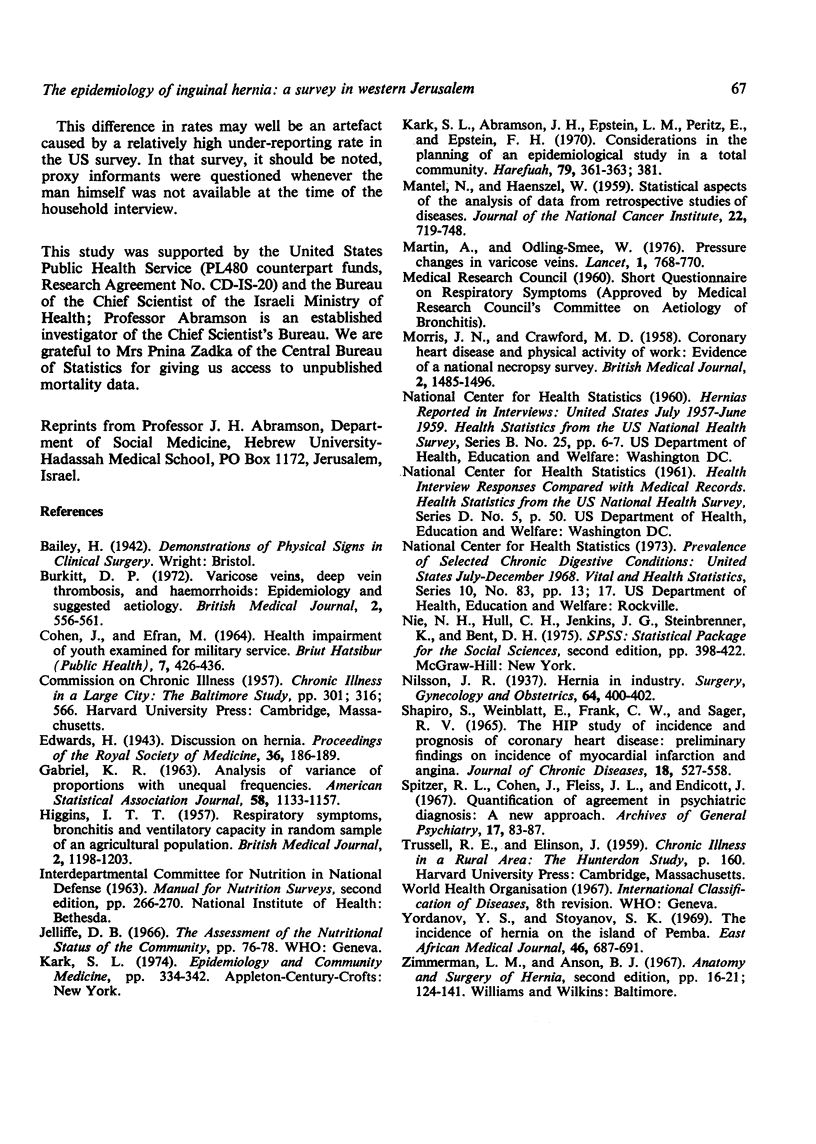
Selected References
These references are in PubMed. This may not be the complete list of references from this article.
- Burkitt D. P. Varicose veins, deep vein thrombosis, and haemorrhoids: epidemiology and suggested aetiology. Br Med J. 1972 Jun 3;2(5813):556–561. doi: 10.1136/bmj.2.5813.556. [DOI] [PMC free article] [PubMed] [Google Scholar]
- HIGGINS I. T. Respiratory symptoms, bronchitis, and ventilatory capacity in random sample of an agricultural population. Br Med J. 1957 Nov 23;2(5055):1198–1203. doi: 10.1136/bmj.2.5055.1198. [DOI] [PMC free article] [PubMed] [Google Scholar]
- MANTEL N., HAENSZEL W. Statistical aspects of the analysis of data from retrospective studies of disease. J Natl Cancer Inst. 1959 Apr;22(4):719–748. [PubMed] [Google Scholar]
- MORRIS J. N., CRAWFORD M. D. Coronary heart disease and physical activity of work; evidence of a national necropsy survey. Br Med J. 1958 Dec 20;2(5111):1485–1496. doi: 10.1136/bmj.2.5111.1485. [DOI] [PMC free article] [PubMed] [Google Scholar]
- Martin A., Odling-Smee W. Pressure changes in varicose veins. Lancet. 1976 Apr 10;1(7963):768–770. doi: 10.1016/s0140-6736(76)91609-3. [DOI] [PubMed] [Google Scholar]
- SHAPIRO S., WEINBLATT E., FRANK C. W., SAGER R. V. THE H.I.P. STUDY OF INCIDENCE AND PROGNOSIS OF CORONARY HEART DISEASE; PRELIMINARY FINDINGS ON INCIDENCE OF MYOCARDIAL INFARCTION AND ANGINA. J Chronic Dis. 1965 Jun;18:527–558. [PubMed] [Google Scholar]
- Spitzer R. L., Cohen J., Fleiss J. L., Endicott J. Quantification of agreement in psychiatric diagnosis. A new approach. Arch Gen Psychiatry. 1967 Jul;17(1):83–87. doi: 10.1001/archpsyc.1967.01730250085012. [DOI] [PubMed] [Google Scholar]
- Yordanov Y. S., Stoyanov S. K. The incidence of hernia on the island of Pemba. East Afr Med J. 1969 Dec;46(12):687–691. [PubMed] [Google Scholar]


